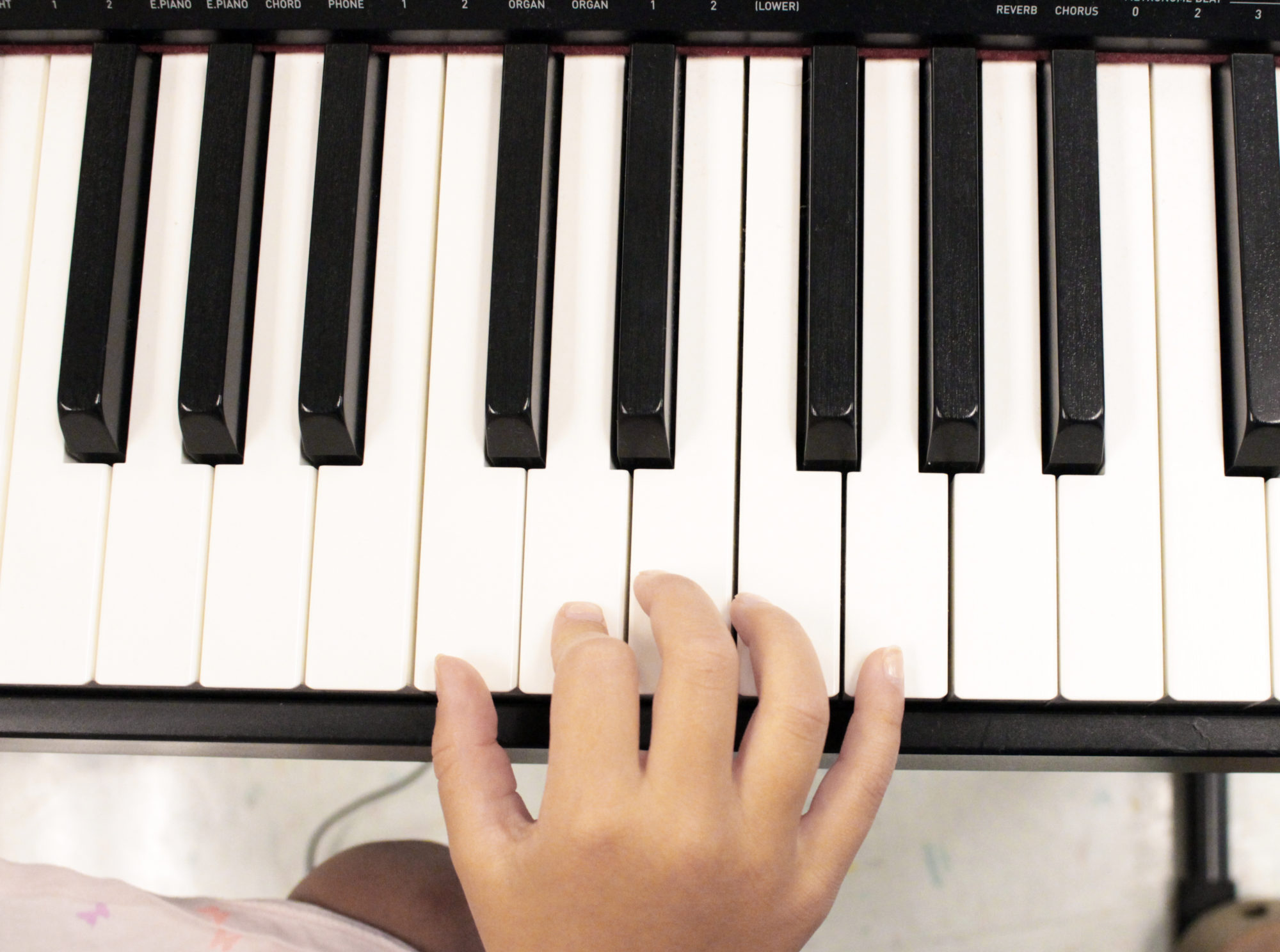Thank you for taking the time to learn a little bit about the music curriculum so you can help your little musician make music! I’m sure it must feel a bit like being lost at sea to try to help a child learn something that you don’t know yourself. That’s ok, and I hope I can give you some tools here that will make it fun for both of you!
Step 1: Listen!
Each song is presented as either a song to be sung, an activity to take part in or a listening exercise. While being able to read the music is important, it is also very important to know what the song sounds like. This is how a musician evaluates  their playing and improves.
their playing and improves.
After we develop an image in our mind of what the song sounds like, it’s time to analyze the sheet music. That looks something like the page to the left.

Step 2: Rhythm!
“The part of the music that makes you want to move.”
 We start by identifying the rhythmic values of the notes and then we clap the rhythmic patterns while we say either the names, (“quarter”, “half-note”, etc.) or the sounds, (“ta”, “ta-ah”, etc.) of the notes. Generally, we say the names in kindergarten and the sounds in 1st grade and up.
We start by identifying the rhythmic values of the notes and then we clap the rhythmic patterns while we say either the names, (“quarter”, “half-note”, etc.) or the sounds, (“ta”, “ta-ah”, etc.) of the notes. Generally, we say the names in kindergarten and the sounds in 1st grade and up.
The next step is understanding the time signature, which defines how many beats and what kind of beats the measures are made up of. The measures are like inches on a ruler. They break the music into smaller pieces. This is a concept that we grow into, however.
Here is a quick reference of some of the common notes we encounter.





Quarter Note
1 Beat
“Ta”
Half Note
2 Beats
“Ta-ah”
Eighth Note
1/2 Beat
“Ti”
Two Eighth Notes
1 Beat
“Titi”
Whole Note
4 Beats
“Ta-ah-ah-ah”
Step 3: Examine!
When we examine the sheet music we ask questions like….
The answers to these questions guide us in playing the song.
Eventually, these steps become second nature and happen automatically, but it’s important to step through them one by one until that happens.
Step 4: Practice!
It’s important to remember that there are few people in the world who like to practice. Most of us would prefer to play. Keep that idea in mind as you encourage your child to play. It’s important to strike a balance between the repetition needed to truly improve from practice and the fun it can be to play a new song. Don’t insist too hard on mastery of each song. Instead, embrace mistakes and the lessons they teach. Emphasize listening while playing and that listening means to hear and think about what you hear. A good musician is always listening and thinking while playing. This allows them to solve their own problems and correct their own errors.
Remember: We learn more from mistakes than we do from playing things with ease.

....But wait! THERE'S MORE!
Please see the Piano Fundamentals Page with information and videos to guide your child in how exactly to start putting fingers to keys!





